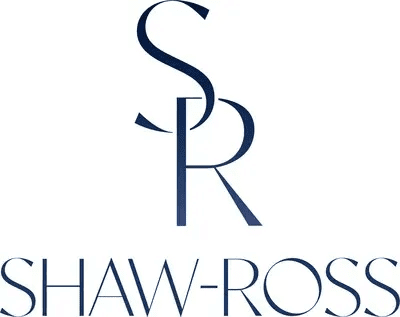 Wineries tailor their marketing messages to reflect what is unique about them and their wines, but messaging can be even more potent when it aligns with the target consumer’s values.
Wineries tailor their marketing messages to reflect what is unique about them and their wines, but messaging can be even more potent when it aligns with the target consumer’s values.
For example, wineries that want to draw in Millennials can tap into the value this generation places on craftsmanship by highlighting how winemakers are, at heart, makers focused on mastering their craft and improving their product. Gen Z values authentic experiences and natural ingredients. What could be more authentic than visiting a nearby vineyard where wine grapes are grown, or more natural than grapes grown using organic or regenerative farming techniques?
Gen Z consumers are also committed to the environment and often engage with climate change content on social media. Grapes’ sensitivity to climate change makes vineyards the first to feel its impact. Sharing how a winery’s success relies on healthy soil, sufficient water and high-quality grapes, as well as the steps it has taken to reduce its environmental impact, can help capture this generation’s attention.

Lightweighting Glass
“We hear from the news that consumers want to reduce their carbon footprint, but Ardagh’s Commercial Wine team directly services the top 15 wineries in the U.S., and we’re hearing from them that they want to reduce their carbon footprint by lightweighting their glass bottles,” says David Humes, Senior Director, Sales – Wine at Ardagh Glass Packaging-North America. “We’re also hearing the same thing from our distributors—TricorBraun WinePak and Waterloo Container—who work with wineries producing less than 500,000 cases.”
Because listening to customers and developing products to meet their needs is critical to Ardagh, it was the first North American company to offer bottles with a reduced environmental impact, being neutral, virtually inert and infinitely recyclable while maintaining the original technical quality and aesthetics. The innovative ECO Series® collection of bottles is ideal for wineries that want to maintain the quality and attributes associated with their glass container needs, while reducing the overall impact on the environment.
As part of its efforts to reduce carbon emissions, the Pacific Northwest’s largest winery, Ste. Michelle Wine Estates, transitioned to Ardagh’s ECO Series glass in 2022. As a result, it reduced its environmental impact by saving an annual equivalent of the greenhouse gas emissions from driving 237 gasoline-powered cars and the CO2 emissions from powering the electricity of 214 homes for one year.
Aggressive Environmental Goals
Like its winery clients, Ardagh is also working to reduce its environmental impact. The company set aggressive goals to achieve by 2030, including reaching 100 percent renewable electricity and zero waste to landfills, and reducing water intensity by 26 percent and nitrogen oxides (NOx) intensity by 23 percent globally. Ardagh is also ambitious in reaching net-zero carbon emissions by 2050.
“To achieve these goals, we have a Sustainability team within Ardagh Glass Packaging,” adds Humes. “They are 100 percent focused on improving sustainability throughout our global and North American facilities. Ardagh Glass Packaging’s headquarters and all of its wine-focused production facilities have achieved ISO 14001 certification, which is focused on minimizing our impact on the environment, complying with applicable laws and regulations, and working toward continual environmental improvement.”
Humes believes that the critical factor in achieving these ambitious goals is execution, emphasizing it is the reason “everything we do focuses on crafting Quality in every container, while reducing water, consuming fewer raw materials and lowering our carbon footprint.” For example, one of Ardagh’s goals is to increase its use of cullet since this recycled glass melts at a lower temperature than virgin raw materials. Since each 10 percent increase in cullet is estimated to reduce a glass furnace’s energy demand by 2.5 percent and CO2 emissions by 5 percent, it has sustained its cullet use at an average of 39 percent in its North American plants.

Ardagh makes all its glass wine bottles at manufacturing facilities close to major U.S. wine regions to reduce transportation costs and carbon footprints for its customers. Its Seattle glass manufacturing facility installed a state-of-the-art stormwater handling system to help protect the water and salmon in the nearby Duwamish River. In Madera, California, the company’s new 10-megawatt solar project for its glass manufacturing facility will supply approximately 25 percent of its electricity demand. The electricity generated from this project is estimated to reduce demand from the local grid equivalent to more than 1,500 averaged-sized American homes.
“As an environmental leader in the packaging industry, Ardagh continuously pursues opportunities to lower our carbon footprint,” said Alex Winters, Chief Sustainability Officer at Ardagh Glass Packaging. “Reducing the weight of glass bottles brings proven benefits in reducing raw materials, greenhouse gas emissions and carbon footprint. By utilizing a combination of lightweighting and ‘rightweighting’ (optimizing the weight of the bottle), we are pursuing the needs of our customers, our product and the environment through delivering a low carbon intensity by weight.”
Contact Ardagh Glass Packaging at marketing.glass.na@ardaghgroup.com for more information about their lightweight ECO Series® glass bottles and about partnering to create a message of environmentally positive achievements to share with consumers.







